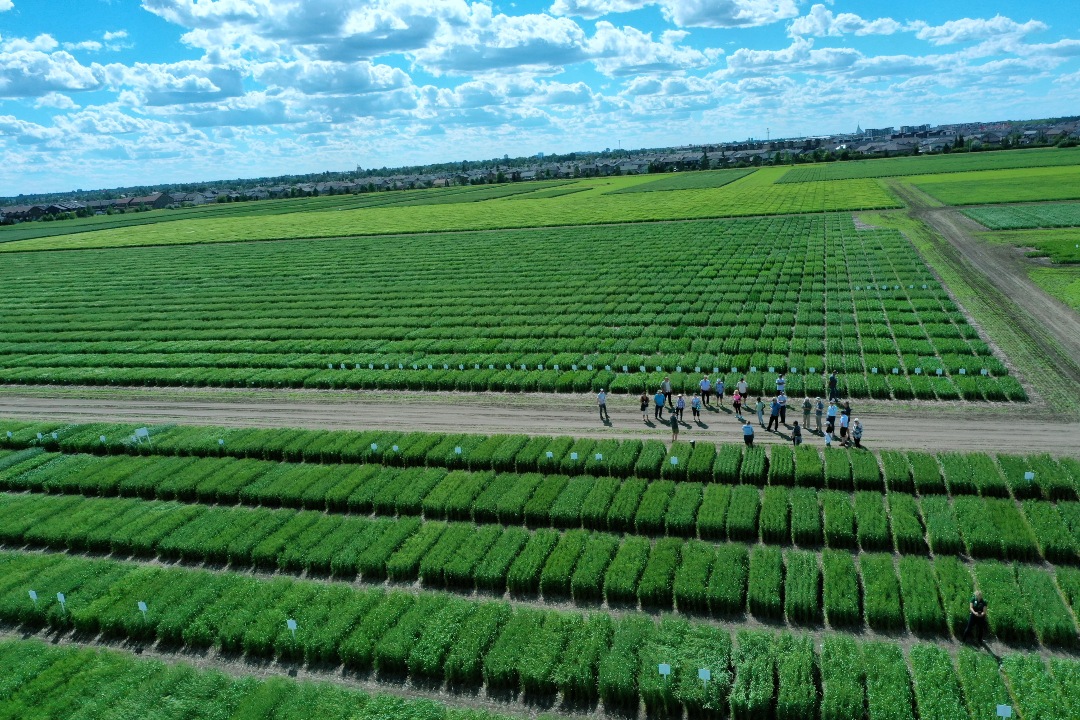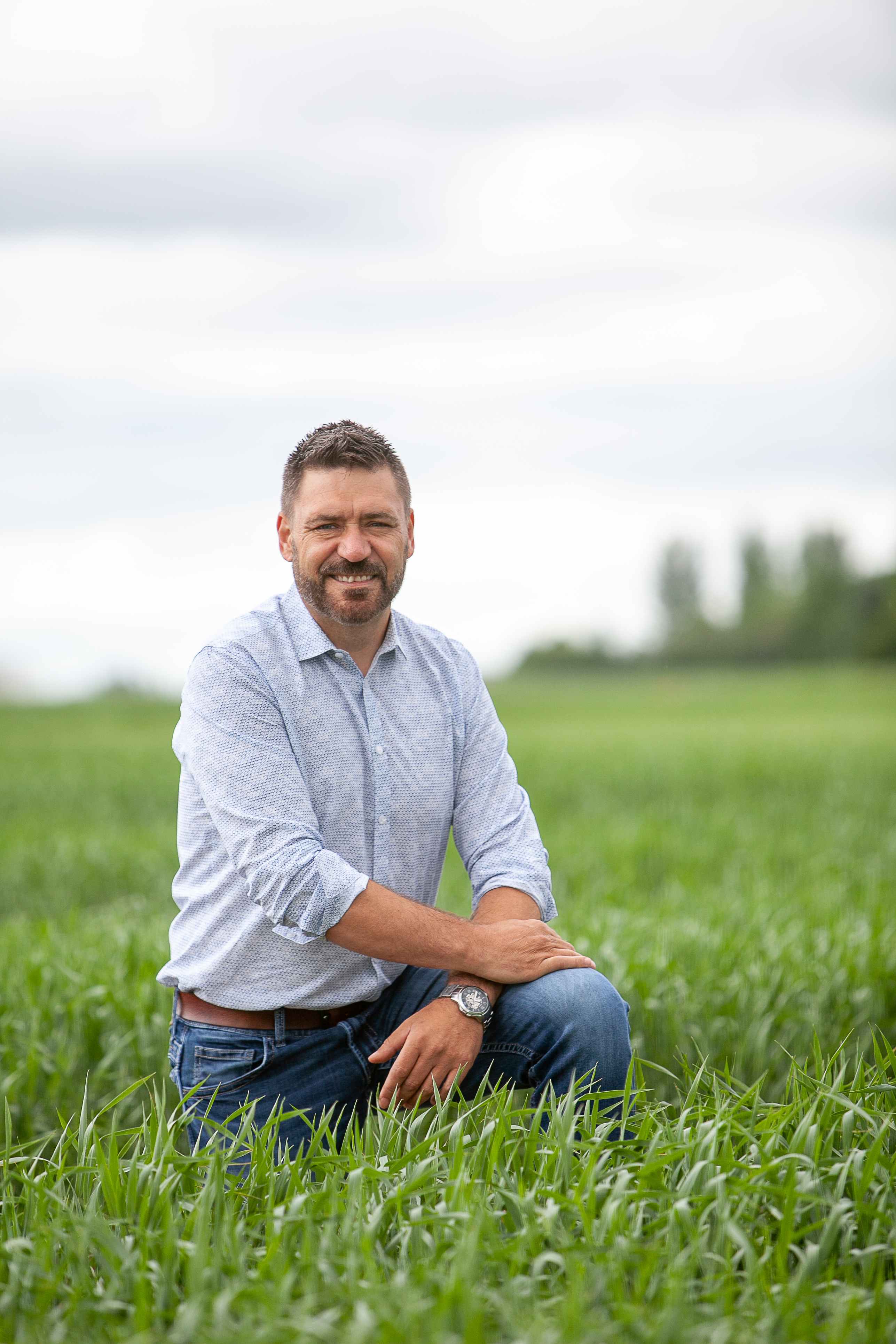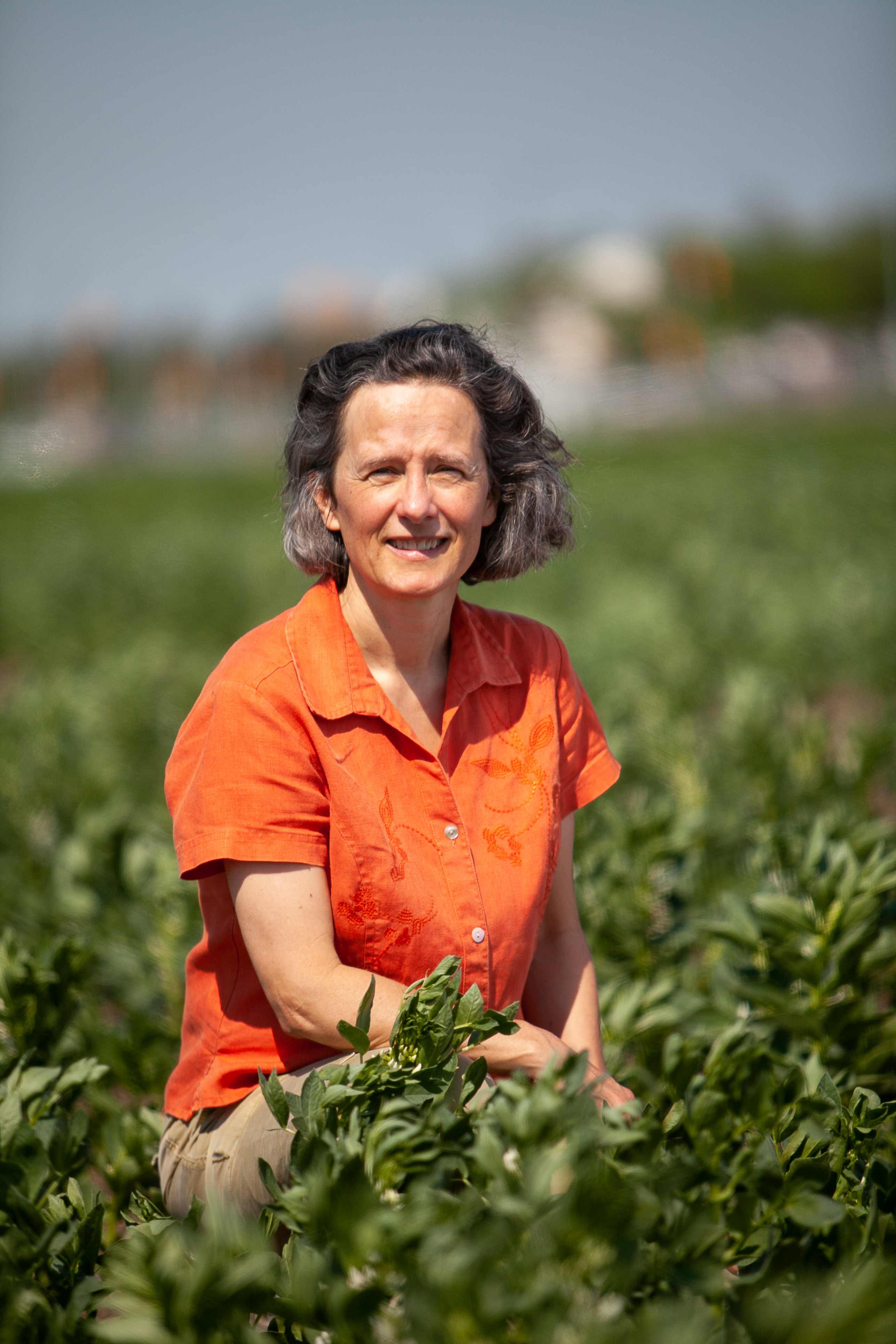
USask awarded $14 million to support innovative crop research
The University of Saskatchewan (USask) has been awarded $14 million through Saskatchewan’s Agriculture Development Fund (ADF), with $7.2 million of the funds allocated to operating the Crop Development Centre (CDC) for the next five years.
By Research Profile and ImpactNineteen USask researchers were awarded $6.8 million to support 29 innovative crop-related projects, ranging from using plant-derived ethanol and biodiesel to reduce plastic waste, to developing nutritionally balanced milk using pulse and oilseed protein, to tackling a root rot problem in lentils, a key export for Saskatchewan.
“I am grateful for the investment in crop research at USask by the provincial and federal governments, and industry partners that recognizes the tremendous economic and social contributions of our researchers,” said USask Vice-President Research Baljit Singh.
“Their innovations help deliver on USask’s commitment to addressing global food security and creating value-added products that make Saskatchewan a world leader in agriculture.”
The ADF is supported through the Canadian Agricultural Partnership, a five-year, $3 billion investment by federal, provincial, and territorial governments to strengthen Canada’s agriculture and agri-food sector. This includes a $2-billion commitment that is cost-shared 60 percent federally and 40 percent provincially/territorially, with a $388-million investment in strategic initiatives for Saskatchewan agriculture.
CDC a world leader in plant breeding

Plant geneticist and wheat breeder Dr. Curtis Pozniak (PhD), a professor in USask’s College of Agriculture and Bioresources and CDC director since 2020, stressed the importance of support from the Ministry of Agriculture since CDC’s inception 52 years ago.
We are grateful for this significant ADF funding to support CDC’s operations. It speaks to the province’s commitment to the CDC’s mission, which is to improve the profitability of Saskatchewan and western Canadian growers,” he said. “This support is invaluable to achieving our vision of being global leaders in the area of plant breeding, pathology, and quality of the grain crops that we grow in Western Canada.”
The operating funds support the work of eight CDC scientists, grain quality testing, and field operations.
Pozniak said CDC has developed more than 500 crop varieties across 40 different crop types over the past five decades, noting that high-yielding productive varieties are fundamental to a sustainable agriculture production system. Thanks to CDC’s innovations, Saskatchewan is now the world leader in exporting peas, lentils, and chickpeas to fast growing markets such as India, Bangladesh, and northern Africa.
An economic assessment of the CDC showed that for every dollar invested in the CDC, there was a $12 return to growers, he said. If one considers just pulse crops alone, such as lentils and peas, that return is a substantial $44 for each dollar invested.
Over the next five years, we will continue our work to be globally recognized for research and crop development and build our capacity in terms of people and infrastructure so that we can expand the important work that we do at CDC,” said Pozniak.
Developing MAGIC lentils to fight root rot

Dr. Sabine Banniza (PhD), professor in USask’s College of Agriculture and Bioresources, was awarded $421,000 in ADF funding as well as additional support from the Saskatchewan Pulse Growers Association to develop a multi-parent advanced generation intercross (MAGIC) lentil population to explore resistance to two soil-borne pathogens that researchers believe are the main problems for root rot.
Root rot affects the below-ground portion of the developing plant, leading to poor performing pulse crops. Once root rot has set in, nothing can be done to reverse it.
Surveys between 2015 and 2017 indicate that 48 to 99 per cent of lentil and pea fields had moderate to severe root rot in Saskatchewan, and complete yield losses were reported in heavily infested fields in Saskatchewan and Alberta.
Banniza’s team will use four “elite” lines of lentils that are close to being varieties that could be commercially grown and intercross them with four close wild relatives that have known resistance to the two pathogens, called Fusarium avenaceum and Aphanomyces euteiches.
“We will do an intensive crossing program to generate loads and loads of crosses—resulting in about 400 lines—that combine the genes of those two lentil groups as much as possible,” said Banniza. “Then we will evaluate them in the phytotron (controlled environment facility) for resistance to these two pathogens.”
Banniza is hopeful that her four-year project will identify resistant lines that can be developed right away into commercial varieties or are just a few steps away from that.
Using Saskatchewan ethanol and biodiesel to reduce plastic waste

In a world confronting a steadily growing mound of plastic waste that is polluting land and water alike, Dr. Martin Reaney (PhD), professor in USask’s College of Agriculture and Bioresources, has been awarded $360,000 to develop technology to degrade plastics to reusable forms by using Saskatchewan-produced biodiesel and ethanol.
Biodiesel is a diesel fuel substitute made from plant oil or other renewable material.
Reaney said his team some years ago developed an “incredibly efficient” and very inexpensive catalyst using vegetable oil and salt water to make biodiesel, with glycerol as a byproduct. Researchers learned that they could add hydroxides of sodium, potassium or even lithium to the glyceride, with the resulting glycerol alkoxide crystallizing into a cheap catalyst.
When a catalyst is combined with ethanol and added to plastic materials, such as PET (polyethylene terephthalate, used to make water bottles etc.), or PLA (polylactic acid, used to make plastic film, etc.) plastics, or plastic powders from drinking water bottles, it reacts quickly to release monomers, which are the original materials used to create the plastic.
Another common source of non-biodegradable plastic waste is polystyrene, which is often used as an expanding foam in appliances or for moulding. This type of plastic can easily be dissolved in biodiesel, which is a fuel created from oils. The resulting mixture can then be utilized in various products, like concrete additives and sealants.
“I think if you combine this technology with some other innovations, such as laws requiring plastics be designed to be reaggregated back into pure plastics, this could be revolutionary,” said Reaney.
Nutritionally balanced milk from pulse-oilseed proteins

The non-dairy milk market is growing rapidly, with a predicted global worth of more than $3.7 billion US by 2026. Dr. Mike Nickerson (PhD), professor and acting head of food and bioproduct sciences at USask’s College of Agriculture and Bioresources, has been awarded $305,000 to develop a more nutritionally balanced milk alternative.
“We want to mimic more of the three-and-a-half, four per cent protein level of milk whereas some of the other plant-based milks tend to be lower in that amount,” said Nickerson.
He also noted that many alternative milk products, especially legume-based products such as soya milk, have a “beanie” flavour.
“We want to develop a gluten-free, plant-based milk with that complete healthy fatty acid profile, and also pay attention to flavour and try to improve the flavour profiles of these milk products,” he said.
The key technology his team is developing is the blending of proteins, Nickerson said, making expansion into other products such as ice cream and yogurt attractive.
The technology brings several advantages to Saskatchewan agriculture producers, he said, with value-added opportunities for more plant proteins and expanded market segments for those ingredients, as well as higher demand for crops.
Other ADF funding recipients at USask are:
- Bishnu Acharya (Engineering), $201,333 for valorization of canola meal by developing canola meal extract as a microbial media for fermentation; and $175,000 for investigating the feasibility of agricultural biomass power generation in Saskatchewan.
- Yongfeng Ai (Agriculture and Bioresources), $208,500 for investigating the use of infrared heating to improve functional and nutritional attributes of pea flours in prototype food products; and $359,400 for the development, characterization, and food use of novel whole-cell flours from Canadian pulses.
- Sabine Banniza (Agriculture and Bioresources), $225,950 for exploring the diversity of Fusarium solani and F. Oxysporum infecting pulse crops.
- Jonathan Bennett (Agriculture and Bioresources), $411,699 for identifying microbial inocula to increase salt tolerance in barley.
- Kirstin Bett (Agriculture and Bioresources), $129,361 for identifying genetic tools to ensure Saskatchewan dry beans are protected from anthracnose.
- Maryse Bourgault (Agriculture and Bioresources), $433,964 for investigating livestock re-integration in cropping systems for soil health improvement.
- Won Jae Chang (Engineering), $550,853 for development of economical salinity remediation strategies for agriculture water using innovative desalination minerals.
- Anas El-Aneed (Pharmacy and Nutrition), $153,625 for commercializing green extraction technology of phytosterols from canola oil waste stream.
- Supratim Ghosh (Agriculture and Bioresources), $210,000 for developing pulse protein-based whipped cream with healthy vegetable fat as a high-value dairy alternative.
- Pierre Hucl (Agriculture and Bioresources), $96,527 for increasing the efficiency of canary seed breeding and enhancing herbicide tolerance; and $99,983 for combining higher anthocyanin levels, enhanced quality, and improved disease resistance in the purple wheat.
- Darren Korber (Agriculture and Bioresources), $262,500 for investigating commercially ready vegan protein-based entrapment systems for probiotics for inclusion in plant-based foods.
- Randy Kutcher (Agriculture and Bioresources), $173,823 for developing an accelerated disease phenotyping system to select wheat germplasm resistant to FHB and stripe rust; and $208,150 for evaluating flax-chickpea intercropping for disease management – fungicide regime and variety selection.
- Curtis Pozniak (Agriculture and Bioresources), $195,001 for marker-assisted pre-breeding for alternative semi-dwarfing genes and anther extrusion in durum and bread wheat.
- Sean Prager (Agriculture and Bioresources), $226,500 for examining potential threats from pea seed-born mosaic virus and developing PSbMV-based tools to study legume seed development.
- Martin Reaney (Agriculture and Bioresources), $260,000 for investigating vegan soft cheese and yogurt replacement products from pulses.
- Jeff Schoenau (Agriculture and Bioresources), $102,789, for straw harvesting strategies to provide feedstock while maintaining soil and environmental quality.
- Jafar Soltan (Engineering), $45,000 for investigating potential and feasibility of ozone treatment processes for the reduction of off-flavours and improvement of colour of plant proteins.
- Takuji Tanaka (Agriculture and Bioresources), $218,000 for development of applications of legume protein enriched fraction derivatives: combinations of proteolysis and conjugation.
- Tom Warkentin (Agriculture and Bioresources), $270,250 for developing soybean cultivars for profitable, sustainable prairie cropping systems; and $278,875 for increasing protein-yield in pea using nested association mapping; and $155,747 for the development of SNP markers for marker-assisted selection of pea for water use efficiency and micronutrients.
- Albert Vandenberg (Agriculture and Bioresources), $225,000 for breeding high value lentils for future consumer trends; and $250,000 for 3F2B - fast forward faba bean breeding.
For a full list of all projects funded, please visit the Government of Saskatchewan announcement here.
